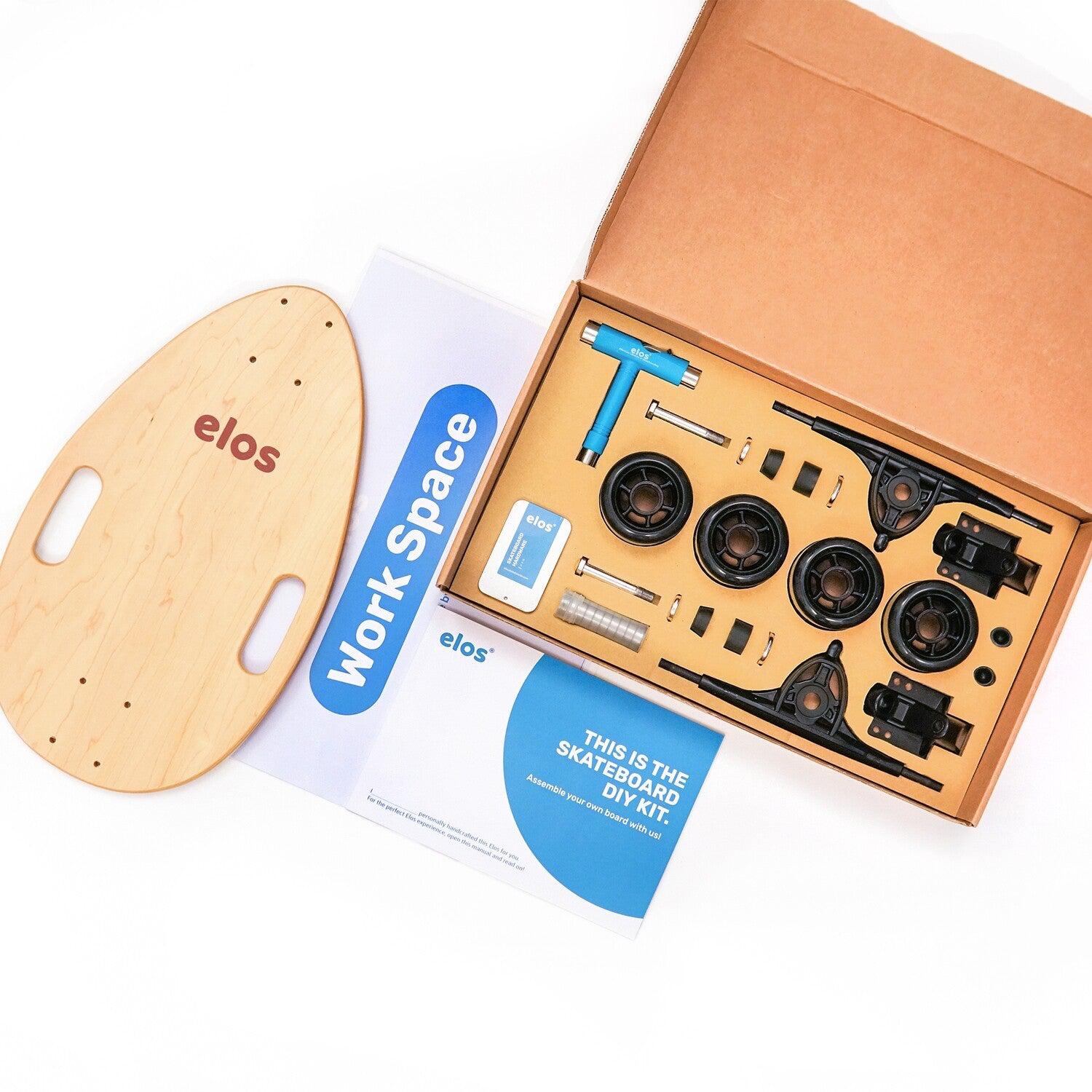The history of Elos Part II
Last month I mused a bit on what inspired the birth of Elos. This month I want to share what it took to move from selling a few dozen boards sold to a few thousand. (if you missed Part I read it here)
Selling 80% of the boards at the maker faire was a good enough result for me to consider moving forward and starting a skateboard company, but what really pushed me over was the number of phone calls I got after the faire. People who had seen them but didn’t have the cash on hand to purchase, or even better, the friends of those who did purchase were lined up to get their own. All in all, we produced and sold around 60 early versions of Elos before really deciding to make the next big step.
What many people don’t know is that Elos wasn’t our first company name. We played with a few names like trying on new clothing. In fact, the boards sold at the maker fair were under the name “CarryOn Skateboard”. We even made a few Facebook pages to gauge interest. It’s fun to look back and see where we came from. If it wasn’t for our need to test things we might be called CarryOn or Convii or any other number of things. Finally, the name Elos prevailed above all else. Yet, somewhere out there are the original CarryOn boards, floating around in the world…a relic of our past.


Everything we do at Elos involves a ton of micro-tests and adjustments before we go big. Our first Kickstarter was no different. Prior to our first launch, we tested and polled the living bejeezus out of everyone who had ever ridden our board or heard us talk about Elos. We so thoroughly interviewed people it might have felt like borderline harassment. We wanted to know what they liked, what they hated, why they rode it, how they introduced it to others, and on and on. In the end, our work paid off.
 The Convii boards look like little mini-beetles or ladybugs
The Convii boards look like little mini-beetles or ladybugs
By combing through all the feedback we were able to refine the board and figure out effective pitch lines. The team also started deep diving on the marketing resources necessary to be a full-on brand. We took marketing photos and videos, we spent money on ads, websites, and branded materials. It cost me most of my savings to get up and running plus have a war chest for ad spending. With the pieces in place, it was time to get our idea out into the open internet.

Running your first Kickstarter is anxiety-inducing, to say the least. Imagine asking your high-school crush to prom, but he or she has never seen you in person. They just need to believe you are awesome just because you said you were in a text message. Oh, also you need to convince them they need to pay for the whole evening…upfront. Even though people who had run successful campaigns were helping mentor us, it took everything we had to get ready for that test. We were committed to running the campaign clean, no marketing ploys (like back your own product to inflate numbers which a surprising number of people do). It was a real-world test that would tell us if this business was for real or not. One of the greatest feelings I’ve ever experienced is watching our Kickstarter go from $0 pledge to $100 and beyond.
 Kicktraq Data (LINK)
Kicktraq Data (LINK)
People really liked what we were doing. We were able to raise 80k USD on Kickstarter and another 150k USD a few months later on another crowdfunding platform. Our fulfillment went smoothly and we hit every milestone and delivery date as promised. Not because we were experts but because we had refined the process before ever promising anything publically.
Honestly, my greatest advice for anyone starting a business and considering doing crowdfunding is — don’t crowdfund first, figure out your process and pick the brain of early adopters until nothing is left to chance. Once your process is in place it’s easier to find the right pitch line and keep backers happy. Our 3rd crowdfunding campaign was 1000% funded overall and 100% funded in just the first hour.

We were off to a great start, but greater challenges lay in wait. Want to know what happens when you build your company around crowdfunding cycles and then bravely (or foolishly) try to step away from them? Part III of Elos’s history will explain it all (next month that is).

